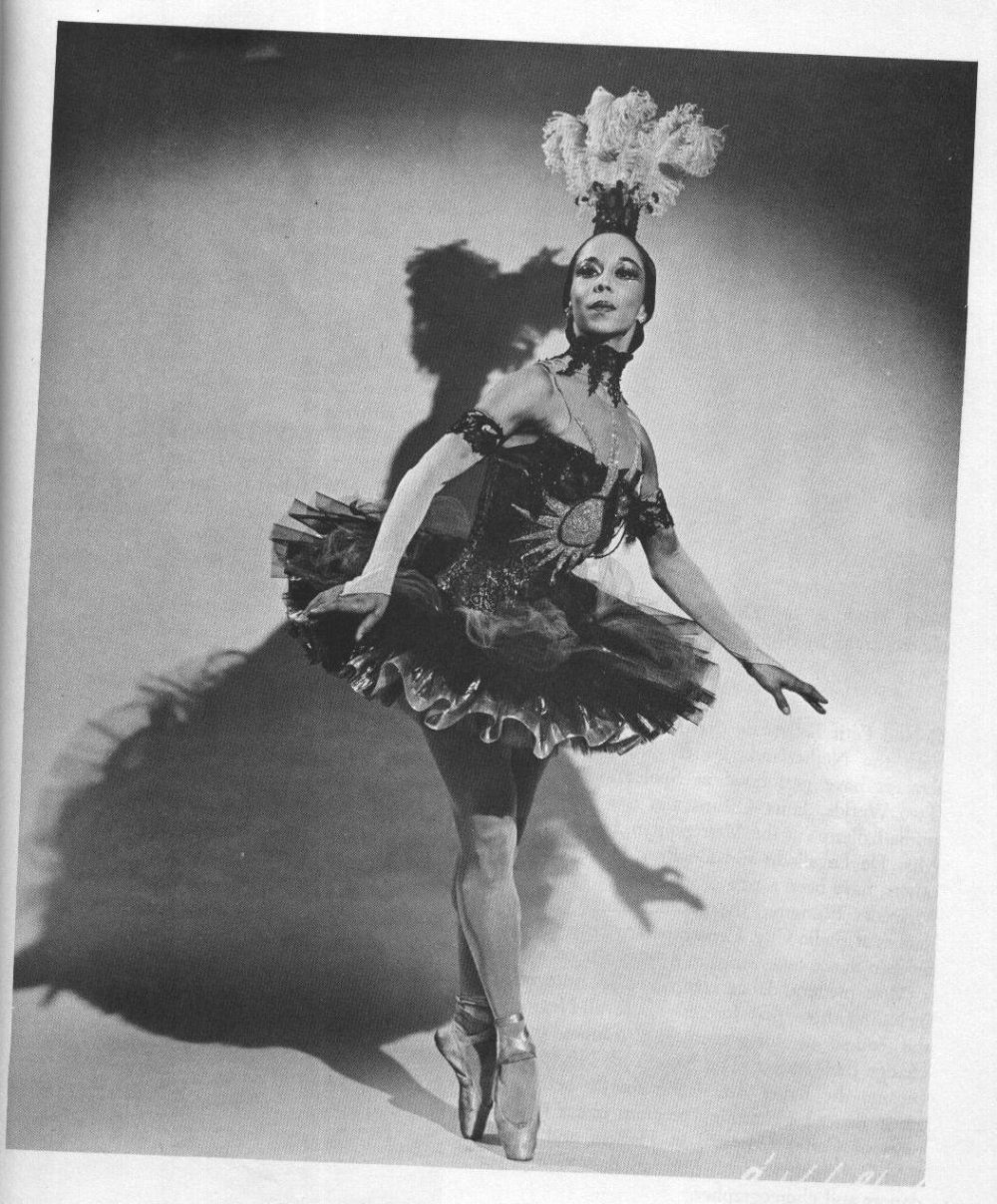Do you know who this woman is?

La Giaconda Metropolitan Opera House
Arthur Mitchell called her 'one of the finest dancers of the twentieth century'. She was a Prima Ballerina with the MET Opera and accepted into the famous Ballet Russes by Leonide Massine (on the condition that she wear face makeup). Those two credits alone put her name down in the history books. Is she there?
Janet Faye Collins (March 7, 1917 – May 28, 2003) was a pioneer and trailblazer in the world of dance when there was no trail for her to follow. She excelled at classical dance, and stood out among her peers.Last year was the sixtieth anniversary of her first performance as a Ballerina on the MET opera stage. Prior to her, Louis Armstrong, and Ella Fitzergald were the only African Americans to have this accomplishment. Marian Anderson, the great Opera Soprano, performed after Ms. Collins in 1955.
Ms. Collins danced at a time when African Americans barely had full citizenship status in the United States. For her to excel in the world of classical dance is (to use the title of her starring role in Cole Porter's Musical) truly "Out of this World".
After the Cole Porter musical, Ms. Collins danced and toured with the MET Opera for three years. During that time, she did not perform in Deep South, because of segregation laws. Ironically, Ms. Collins was born in the Deep South- New Orleans, LA and moved to Los Angeles at the age of four. Her cousin Carmen de Lavallade, also a Louisiana native, took over her role as Prima Ballerina after Ms. Collins left the MET.
Sadly, Ms. Collins career seemed to detour after she returned to New York. While away from the MET stage, she danced in the movie industry, notably with Katherine Dunham in Stormy Weather. After this experience, she moved back to New York and presented her own dance company, and danced with Alvin Ailey, and Talley Beaty. She and Talley Beaty called themselves Rico and Rita, in an effort to seem more Hispanic or South American.
Ms. Collins left New York again, and this time moved back to the West Coast. She became disullsioned with the world of dance, and sought meaning and solace in religion. Her gifts extended to visual art, and she became a painter.
In her later life, her health declined, and she possibly suffered from a form of bipolar disorder. One can only wonder what stresses the world of classical and modern dance inflicted upon her. Being a Negro concert dancer at that time was physically and emotionally draining, and at times psychologically damaging. Negro performers endured discrimination within the dance community, and from the general public. It was nearly impossible to just dance without dealing with the reality of the country and its attitudes towards race and ethnicity.
Janet Faye Collins, Prima Ballerina with the MET Opera. Her name was not included in the history books. I think she is a hero, not just to Blacks, but to anyone who wishes to excel beyond barriers.
| Janet Collins in "Out of this World" Image from 55secretstreet.typepad.com |
 |
| Image from JET Magazine |
To Dance is to Live! Documentary - Janet Collins
Read her obituary from the NY Times
http://www.nytimes.com/2003/05/31/arts/janet-collins-86-ballerina-was-first-black-artist-at-met-opera.html?pagewanted=2&src=pm
Further reading:
The blazing steps of Janet Collins, by Marc Ramirez The Seattle Times
http://community.seattletimes.nwsource.com/archive/?date=20000123&slug=4000846
Night's Dancer: the Life of Janet Collins by Yael Tamar Lewin
Review from Backstage.com
http://www.backstage.com/bso/advice-dance-movement/agrippina-vaganova-and-janet-collins-play-1005994552.story
Comments